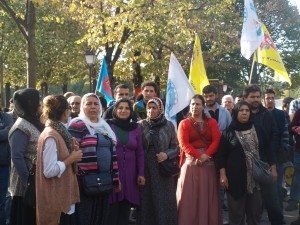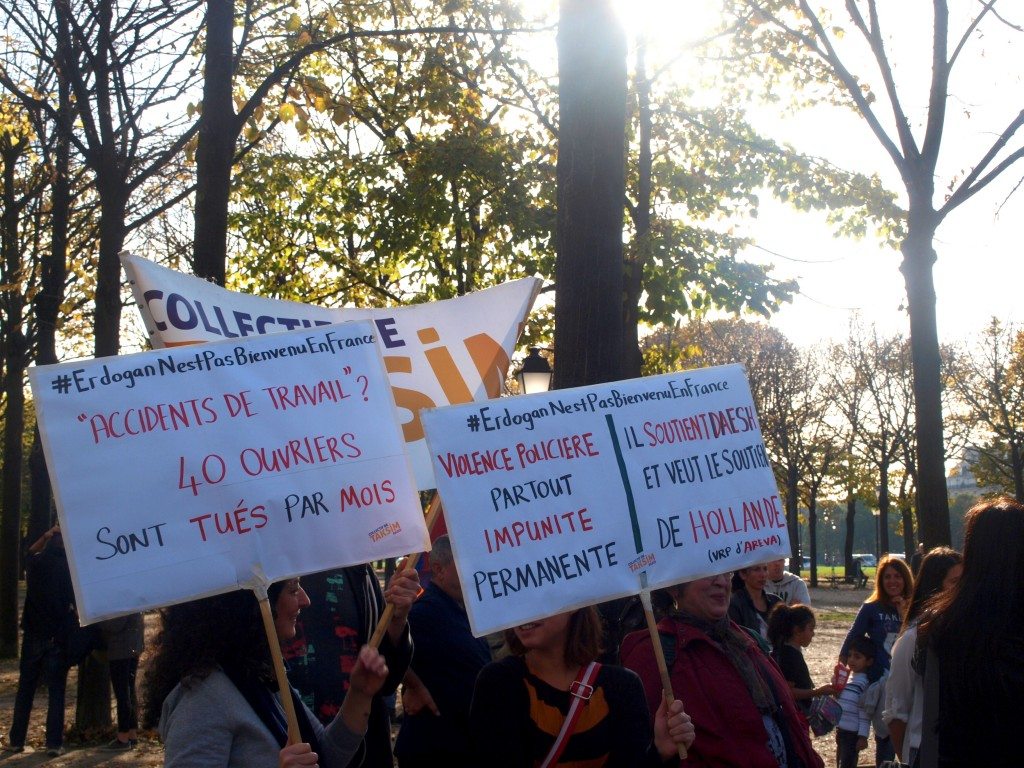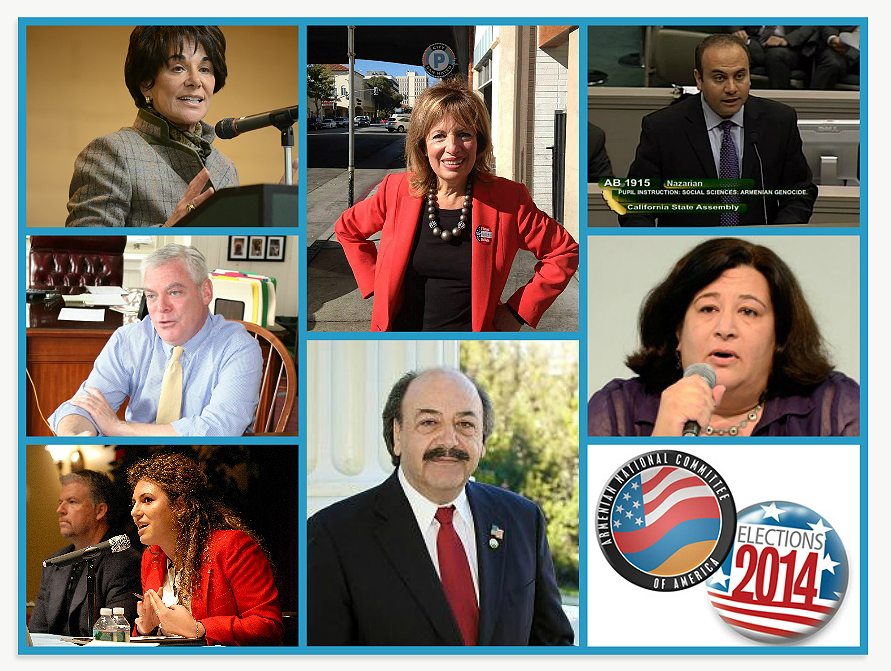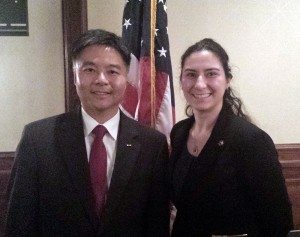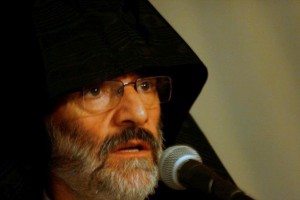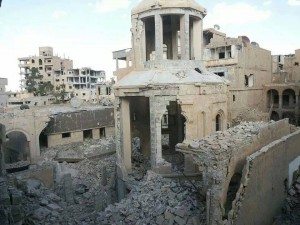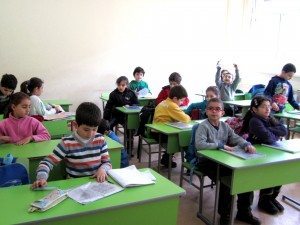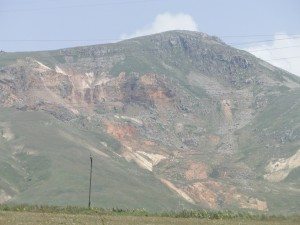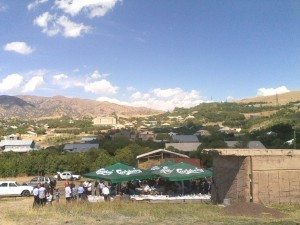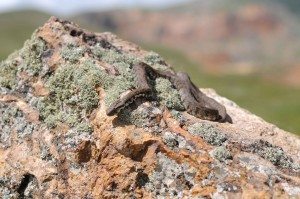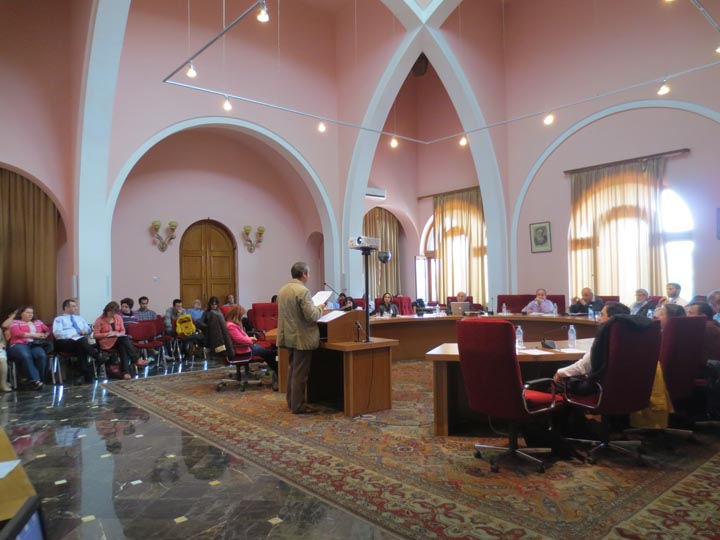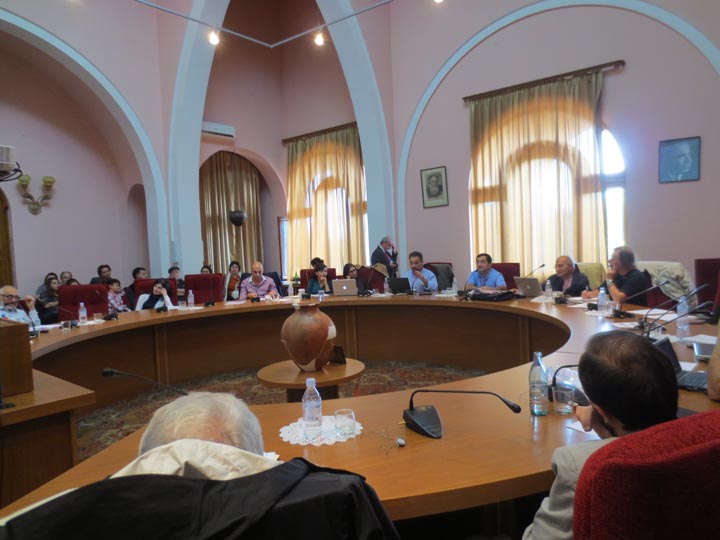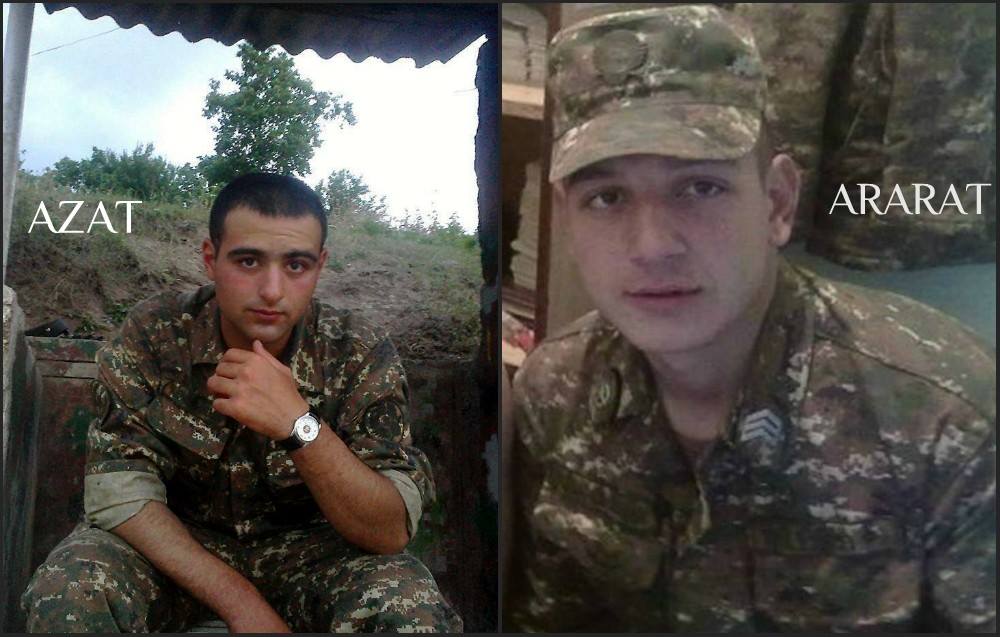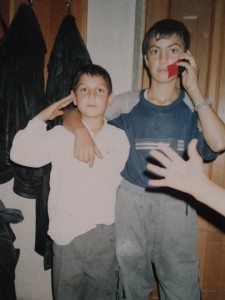Special for the Armenian Weekly
WATERTOWN (A.W.)—In late October, Archbishop Shahan Sarkisian, the prelate of Aleppo, granted an interview to the Armenian Weekly. The Archbishop was in Boston to meet with community organizations and to personally thank the Armenian Relief Society (ARS) for its efforts in providing assistance to the Syrian-Armenian community. During the hour-long interview—conducted in Armenian—Archbishop Sarkisian gave an overview of the Syrian crisis, and spoke about the challenges facing the community today. He was direct in criticizing the worldwide Armenian community for failing to respond to the crisis in a united and comprehensive manner. He said that there is a difference between being concerned and interested—and argued that what he was witnessing was interest and not concern. To be concerned, he added, means to take on responsibility, and that has been missing in the relief efforts.
![Archbishop Shahan Sarkisian]()
Archbishop Shahan Sarkisian (Photo by Tom Vartabedian)
Archbishop Sarkisian emphasized the importance of keeping Armenian schools in Syria open for students—a cause he considers vital to the survival of the community. “Armenian schools are the light of our eyes,” he said, and they need the support of the diaspora. He also spoke about communal organization, relations with neighboring communities, and the dangers before them.
The archbishop also talked about the media and its failures—calling the leading media outlets “messengers of lies.” He criticized news outlets for regurgitating unverified information, likening the misinformation to cancer. For instance, he said, evidence is lacking in the fate of the destruction of the Armenian Church and Genocide Memorial in Der Zor, and he could not say with certainty who the culprits were. He noted that the destruction of the church did not fit ISIS’s modus operandi, since the group typically banks on publicizing their acts for maximum shock effect and propaganda.
He held, however, that the role of Turkey is “great” in the Syrian crisis, but that revealing evidence would only jeopardize the safety of the community.
Archbishop Sarkisian spoke at length about the importance of preserving the Syrian-Armenian community and the role it could play in the larger Middle Eastern—and in today’s geopolitical—reality. The Armenian community is a bridge, he said, between the West and the East, as Armenians occupy a unique position as a trusted people by both the West and the East. He spoke about the dangers of being such a bridge, and about the community’s policy of maintaining positive neutrality.
The archbishop also criticized what he saw as the “naiveté” of the diaspora when publicizing the various fundraising events and sums raised for Syrian-Armenian relief efforts. He argued that such publicity has in the past jeopardized the safety of the community, especially when kidnappings-for-ransoms were rampant.
Although the archbishop gave a number of interviews while in North America, he explained that he had turned down such opportunities beforehand for fear of repercussions on the community. If my words are taken out of context, he said, it is the community who will suffer the consequences.
The archbishop arrived in the U.S. on Oct. 13, and proceeded to tour Armenian communities in North America, including Canada. He returned to Syria on Nov. 6.
Below is the interview in its entirety.
***
Nanore Barsoumian—Thank you for this opportunity. As you may know, the Armenian Weekly has been following the Syrian crisis closely. Armenians worldwide are concerned about the situation in Syria. Please give us an overview of the crisis—not just in terms of the Armenian community, but as it applies to the whole of Syria.
Archbishop Shahan Sarkisian—A distinction must be made between being concerned and being interested. Most Armenians might be interested, but are most Armenians concerned about Syrian Armenians? Not from my perspective. I don’t see it.
Judging from what I’m seeing, first, it is a disorganized way of being concerned. Second, I see the concern as being more about financial considerations and property. There is a community there and a hundred years after the genocide it is settled and organized. But the Aleppo Armenian community has a nearly 1,000-year history. After the genocide, at the doorstep of the Centennial, Armenians are generally interested in what is happening. That sort of interest does not only apply to Armenians but to anyone on this planet who is interested in what is going on in the Middle East and, specifically, Syria. For me, concern is something else. To be concerned means to be committed, to assume responsibility. And assuming responsibility does not mean to send financial assistance to Armenians in Aleppo and Syria. Not at all. That is only one part of an entire program that does not exist. This is the core issue.
To be concerned means to be committed, to assume responsibility. And assuming responsibility does not mean to send financial assistance to Armenians in Aleppo and Syria. Not at all. That is only one part of an entire program that does not exist. This is the core issue.
But to answer your question, the Middle East has always been a stage for wars and upheavals. Recently, there have been many color revolutions, including the [Arab] Spring uprisings, one wave of which took place in Syria, and then turned into armed clashes. The fighting spread. The fire spread from one place to another, just as it would in a forest with dry leaves.
Today, without exception, all the cities and villages in Syria are in a state of war. There are some places that the war has devastated so badly that there is no space left for fighting, and the situation has therefore calmed down—not because of peace deals. There are other places that are still in the process of being ruined and the devastation continues. I am neither an expert in international and local diplomacy, nor in political science. I am not an expert in the military field. But I do know that although Syria is one entity on the map, the country is fragmented into numerous parts.
The Syrian-Armenian community in the Middle East has been in constant communication and continues to have relations with various Armenian, Christian, and local peoples, nations, religions, and cultures. It cannot remain indifferent or passive. In general, from the beginning of these events, our position—a costly and difficult position—was to adopt a positive stance: We would not participate in any military activities. We would not side with anyone. Some people call that positive neutrality, which is a political concept. Ours is a variation of this positive neutrality. People ask, ‘Which side are you on—this or that side?’ We tell them, ‘We are on the third side.’ In terms of an alternative, we represent a third side. But because we are few in numbers, and our voices are hard to hear, we are forced—just like every community, Christian and Muslim, and every ethnic group that makes up the whole of Syria—to deal with the situation that has been created in the country. We are interested in our surroundings, and we help those around us, but we give priority to our community.
Unfortunately, Syria is presently facing uncertainty. There is no sign of peace on the horizon. The war continues and, like everyone else, we too must suffer the fire, the casualties, the kidnappings, the destruction, and the various other types of harm.
The main problem is mis-information—inaccurate information…. the media is supposed to be the messenger of truth, but instead is a messenger of lies.
N.B.—Now there is a new reality, Da’esh (ISIS). How does their treatment of minorities, such as the Yazidis and Armenians, differ from others involved in the conflict? Do you see it as a coincidence that the very same day Armenia celebrated the anniversary of its independence, Da’esh reportedly destroyed the Armenian Church of Der Zor? The destruction also came two days after Catholicos Aram I announced he would sue Turkey over the return of the Sis Catholicosate properties.
S.S.—First, let me be a bit critical, because in today’s world, information can be artificial. The world’s PR machine—whose main outlets are television, social media sites like Facebook, Twitter, YouTube, and others, and on a lesser plane the print media—often tries to get its information from safe sources. The big journalistic machine disseminates news, and others repeat that information, sometimes by paraphrasing it, or making some changes. So the main problem is mis-information—inaccurate information.
This resembles someone who has cancer and can’t get rid of it. This is a cancer. This is not my job. I have had nothing to do with the media specifically for this reason—and it is a key reason because the media is supposed to be the messenger of truth, but instead is a messenger of lies. Sometimes it outputs information without even fact checking, or creates an atmosphere of shock. It’s an accepted reality. You don’t see television programs about serious topics, nor do you see it online. Something has to be bizarre for people to become interested; for example, when they show a beheading, people find that interesting because it awakens in them an animalistic instinct, and that interests them. There is no other reason.
N.B.—You mean it shocks people. It’s shocking news.
S.S.—Yes, and they find it interesting. I’m going back to what I was noting earlier about being interested. Only a part of the information that comes from the media is true, but is not verified. For example, who destroyed the Der Zor Holy Martyrs Memorial and Church, and why? There is no verified evidence about it. It’s the analysis that makes you think that on this date this happened, or that on this date this was said, and so that means that these groups were responsible for it. This is one side of it.
![The first photos of the destruction of the Armenian Genocide Memorial Church in Der Zor emerged on Sept. 24.]()
The first photos of the destruction of the Armenian Genocide Memorial Church in Der Zor emerged on Sept. 24.
For us Syrian Armenians, it is clear that in the Syrian crisis the role of Turkey is great. And if we think that they are not interested in us…they are interested in us more than anyone else. There is no lack of evidence. But at the same time, you cannot reveal the evidence, because revealing it means jeopardizing the safety of a community. So in the case of Der Zor, when you say this group is responsible for the destruction, I say I don’t know that. The images that emerged from Der Zor—if the perpetrators belonged to a group that prepares images in order to shock the world, it would have been very easy for them to disseminate footage of the destruction [of the church] on YouTube. They didn’t disseminate anything. There is one photograph, maximum two.
N.B.—But we know that the church has been destroyed.
S.S.—The photograph makes it clear—but who did it, and why? The answer has been subject to the analysis of journalists and politicians. But for us to come out and say these are the people responsible… We know the groups we’ve had conflicts with, and they know us. But those that we have not had issues with, why should I name them [as culprits]? That would only turn their attention to us. Because of that, this group that has invaded large parts of two countries has had no direct conflict, relation, or communication with us. Absolutely none.
In the beginning of the events in Syria, especially the events in Aleppo, we had numerous members of our community kidnapped. More than 100 of them. That was a phase when kidnappings were frequent. Ransoms were paid, and finally that phase faded. The practice faded.
We were able to keep a balance until today. Two principles were essential in keeping that balance: One of them was [respecting] the country’s territorial integrity—that we are Syrians, and we use the term “the Syrian Homeland,” not the term “Our Homeland.” We say, “Syrian Homeland.” If a citizen of the United States of America says that this is an alien homeland [օտար հայրենիք], it means that they have no right to live there. This is especially true in the case of Syria, and in our case. We have been living in Syria for a millennium. There are few communities in Aleppo that are as old as us—you can count them on your fingers. Just to remind you, the Armenian Forty Martyrs Cathedral [Սրբոց Քառասուն Մանկանց Մայր Եկեղեցին] has a history of at least 500-600 years—and that’s just after its renovation. A few hundred years before the renovation, it must have been a little chapel that Armenian pilgrims used on their way to Jerusalem.
Our history in Syria did not begin with the genocide. Wherever Armenians have gone, they have brought good with them. We have contributed to the societies we live in—and that’s because we have felt at home wherever we’ve gone. We haven’t felt like outsiders. That’s why the country and the people are above all else. We neither side with groups nor with different authorities.
Sitting here in the Hairenik offices, I remember [Simon] Vratsian. One of his most famous sayings was: The fatherland is permanent; regimes are not [Հայրենիքը մնայուն է, վարչակարգերը գնայուն են]. That’s why, in Syria, we don’t have issues with anyone.
How are issues created? There are two factors: One is—and this is clear—Turkish involvement.
The second is the naiveté of our nation’s children. Let me give you an example—an example that really pained us at the time. We are grateful to all of our compatriots who have sent us assistance. But is there a need to publicize in every newspaper, on Facebook, and everywhere that we had a fundraising, and raised this much, and sent this much? It’s a common sense issue. It is only lawful and right for someone to receive a receipt, a report, an explanation as to whether the sum they donated arrived where it was intended. But you don’t need to [publicize it]—and it goes against Christianity. When your right hand gives, your left hand does not need to know. And if your left hand gives, your right hand does not need to know.
When the kidnappings began—just so you know—people called us and said, ‘You need to pay us in order for us to release these people.’ Why? Because you have been receiving millions from America. This is not a made-up story. I am a prelate, I am responsible, and I know what I am telling you. This weighs heavy. Those who left the country, that’s their business. But those who are still live there don’t need added hardships on top of what they have already had to endure. It causes pain. And that’s why I will go back to what I first told you: I have not seen a united Armenian effort for Syria and the Syrian Armenians—a pan-Armenian effort. My respects to all the different circles, whatever they may be called—church, state, party, all of them. The Syrian-Armenian crisis is not a local issue. It is one of the biggest crises of the diaspora.
![Carlo Hatsarkorzian's plea to the community on Facebook. He was kidnapped in October 2013, and released 45 days later.]()
Carlo Hatsarkorzian’s plea to the community on Facebook. “Please get us out of here ASAP… let the Prelacy pay our ransom so that we can leave this place soon… please,” he wrote. He was kidnapped in October 2013, and released 45 days later.
N.B.—Do you see a difference in the response toward the Lebanese Civil War versus now?
S.S.—Naturally. At that time, when the Lebanese Armenians were in a crisis, Armenia was a Soviet republic. Even so, we saw a small, formal gesture from Soviet Armenia. But the diaspora—especially in the U.S., Canada, and elsewhere—assisted the Lebanese Armenians. At that time, there was no internet. And we didn’t have these modern methods of communication—photographing and posting everything, with captions, and effectively creating a situation.
The fighting in Lebanon lasted around 15 years, although the consequences stretched over 30 years. In the case of Syria, it’s been 3.5 years, almost 4, and Syria has been destroyed worse than many cities during World War II—especially Aleppo.
Today, the humblest to the highest executive offices in the diaspora are often held by Armenians from Aleppo and Syria. Despite being in the Middle East, Aleppo—along with Lebanon—is the last fortress of the Western Armenian language. Western Armenian will be lost soon if this continues, if it remains ignored, or if the necessary steps are not taken.
If someone were to ask me if they could send an army to protect us, I would tell them that we don’t need an army. We—those of us living inside—have been well organized for 3.5 years. Of course, we have our flaws—states have flaws—but generally we work well. We know what we’re doing.
I didn’t used to give interviews. Only after arriving in the U.S. and after being asked a few times did I agree. But I’m only willing to say so much because every time I say anything in an official capacity, I’m aware of the community behind me. If I make an irresponsible comment, if my words are twisted and placed in a different context, if words are moved around… I don’t care about myself…we’re here on this planet for maximum 100 years. Then we’re going to die. But to die for a community, a nation, a church, a school—that is heroism. We’re not afraid of that. It’s not a matter of individuals, it’s a matter of a community. We are in difficult times. You can’t walk into a burning forest, where the trees are in flames, and expect that neither your hair nor the edges of your clothes will get burned. We’re in that situation. But we’re alive and well. And we’ll go forward accordingly.
N.B.—Could you talk more about your work, and the organizational work. How are the different churches or communities working together to assist the community?
S.S.—Syrian Armenians are working together, irrespective of what church or denomination they belong to—Armenian Orthodox, Armenian Catholic, Armenian Evangelical—and what organizations or unions they are involved with. Outside of Syria, they talk about [political] parties. We don’t. The three [Armenian] parties are present here. We have the AGBU, the ARS, we also have had in better days the cultural, social, and charitable unions—they numbered 80. They were founded by some seven or nine institutions. The three communities—Orthodox, Catholic, and Evangelical—worked together even before the crisis. There are a few programs that we implement together, such as the Armenian nursing home and organizing cultural events—not only April 24, but also Vartanants, and others.
Aside from this, for years now the three communities—in terms of political parties [the ARF, Hunchags, and Ramgavars]—had started to work together. They consult with each other, and work on certain projects together, such as the events commemorating the Armenian Genocide, which used to last for the entire month of April—engaging the community from the youngest child to the oldest, in the spirit of remembering, reminding, and seeking justice.
After the events, which in the case of Aleppo started in 2012, we established the Syrian Armenian Committee for Urgent Relief and Rehabilitation [Սուրիահայութեան շտապ օգնութեան եւ վերականգնումի մարմին]. This body became an umbrella for the nine organizations I mentioned before. This body has its own secretariat, directorate, accountants, and PR machine.
We have divided Syria into four parts. Aleppo is the center; the second big city is the capital, Damascus. One is in the north, the other south. On the eastern side, Jazzireh has its center in Qamishli, [servicing] Hasake, Ras al Ein, Deri, Der Zor—that entire area. Then there are the coastal areas centered around Latakia, and include Kessab, Tartus, Banias, Yakoubieh, Ghneymi, Aramo, etc. Also attached to the center are Raqqa and Tel Abyat, which are close to Aleppo. These four parts are run by the Syrian Armenian Committee for Urgent Relief and Rehabilitation, but they also have local implementing bodies, which are comprised of different organizations, political parties, unions, etc. We have a large number of men and women who volunteer.
Our work is divided into four categories: The first is to provide urgent needs like food, water, etc. This was a priority. Whatever we could, we delivered to our community. And so, if one important component of this program is this type of assistance, then the other component is donations. We never talked about what we spent on our community because it’s only logical and natural for us to spend our funds for the needs of our community. But when you have capital, a sum of money, and if you are forced to keep spending it then you will reach a point of bankruptcy. The first of the four initiatives is related to vital things—not just food. For instance, houses need to be cleaned and disinfected to keep diseases at bay.
The second is medical. There are two types: One deals with those who are affected by the conflict. We have a service similar to an ambulance service. The youth, who run it, take folks to the hospital and we cover their expenses. There is also a need for different medications. Aleppo used to be self-sufficient in this area. Now, there are no medications [in the country]—for instance, for a diabetic. So we need to get them.
The third category is construction. Say a bomb went off, windows are shattered, doors broken, we have to fix that. But if the building is destroyed, we can’t rebuild it now. Once the fighting subsides we are going to start to rebuild. Rebuilding is a state-level expense. Now we, too, function like a small government body with whatever we are trying to accomplish.
![ARS-Syria’s Preschool after the shelling of Aleppo’s Armenian-populated Nor Kyough suburb in June 2014]()
ARS-Syria’s Preschool after the shelling of Aleppo’s Armenian-populated Nor Kyough suburb in June 2014
The fourth category, which is very important, and is the reason for my travel to the U.S. and Canada, is education. The Armenian school—and this is not a sermon that I’m reciting—is our backbone. If there is no Armenian school there will be no Armenian agoump, no Armenian church, or anything else. Without an Armenian school nothing else can exist. If in our circles today there are intellectuals, leaders, activists, religious figures, members of organizations who speak and write Armenian well, they owe it to the Armenian school.
Our Prelacy ran around 20 schools in Syria in the beginning of 2011. There were 40 Armenian schools in the country then. That’s not a small number. By the 2012-13 school year, some of these schools had closed, because Armenians were leaving.
Let me give you some examples: In the East, Deriq still has a church and a school. Next to it, in Ras al Ayn, there are no Armenians left, but the school and church buildings are still there. Next to it is Hasake, which is the capital of the province; there is a school and church there, but the numbers have decreased. The school in Qamishli is there—from kindergarten to middle school and ninth grade—but the numbers have, of course, decreased. We did not have a school in Der Zor; we just had a Saturday school that taught local Armenians the language once a week. We had a school in Raqqa, as well as in Tel Abyat, but not anymore—there aren’t any Armenians left. In addition, the areas have been taken over by the group [ISIS] you were mentioning earlier.
And so, in the case of Aleppo, we had 11-13 schools there—I say schools because the kindergartens are sometimes in separate buildings. For instance, the Azkayin Sahagian School [Ազգային Սահակեան Վարժարան] has its kindergarten that stands alone, but belongs to the school. There are kindergartens that are outside the main school buildings, and stand as separate entities. In any case, we have 11 schools in Aleppo, 6 of which belonged to the Prelacy—these are 2011 numbers. We closed one of those schools because the area where it was located was deserted, and the number of students had diminished.
Five schools remained. I’ll give the names: Azkayin Haygazian [Ազգային Հայկազեան]—which is the oldest school, 130 years old; Azkayin Sahagian [Ազգային Սահակեան]; Azkayin Zavarian [Ազգային Զաւարեան]; Azkayin Gulbenkian [Ազգային Կիւլպենկեան]; and Azkayin Karen Yeppe Djemaran [Ազգային Քարէ Եփփէ Ճեմարան]. Because of these schools’ locations and the bombings, we were forced to bring the students under one roof. The safest school was Azkayin Gulbenkian Varjaran, and so we set them up there, and taught the courses by taking shifts. But each school remains separate—each has its own principal, board of trustee, faculty, and students. Naturally, the numbers have diminished, and if they had not it would have been impossible to place the children all in one building. In the morning, for instance, Azkayin Karen Yeppe Djemaran and all the elementary schools are taught together. At noon and in the afternoon, the four elementary schools are conducted together. A significant portion of the donations that reached us in the initial phase were used for food and medical needs, but later the most significant portion was made available to the schools. Despite the number of students in Syria, we covered 35 percent of the tuition for each student. We did this not just for a few students, but for all 5,500 students.
In the Muslim-Christian dialogue, we have a very important role to play. Muslims trust us. Christians trust us. If relations are to be forged…for instance, if we want to create a Muslim-Christian dialogue initiative, everyone will attend. If someone else were to organize it, no one would attend. That’s because they trust us. We don’t take sides. We’re not driven by self-interest. We’re a bridge. But the danger with being a bridge is that everyone will step on you.
N.B.—And this is the current number of students?
S.S.—No, let me give you the chronology. In 2012-13, there were around 5,500 Armenian students in Syria overall. Before that, the number was between 6,000 and 7,000. During the 2013-14 school year, the numbers went down. We continued to contribute 35 percent. Now, for the 2014-15 school year, we are having a hard time. In 2012-13, in the case of the five schools [mentioned above], students attended schools for free. During the 2013-14 school year, students paid what they could contribute—not tuition, just a small sum, a donation that their families could afford. This means that for two years, we made our funds available to the schools, and now we are facing hardship. Some say we did the right thing, others say we did not. But we know that the Armenian students were not left on the streets. Armenian schools opened their doors, and Armenian education was given. Now, we’re in the third year, and in mid-September we reopened the schools once again. It’s been a month and a half that our students are enrolled in classes. They are aware of the dangers, but they are continuing their education.
When people ask me, “Srpazan, where should we send our donations?” I always respond, the school fund. That’s where we need it most. The rest we can solve ourselves. I’ve said this elsewhere as well: our bread is dry but it tastes good, but our schools are the light of our eyes. If your eyes can’t see, you are blind. Our schools are our eyes. They’re the light of our eyes. That’s how we need to look at our schools.
It’s easy to talk about “organization” in a half hour or so, but the work has no end in sight. That is my main reason for visiting the U.S. and Canada, to tell our compatriots: Forget about needs like food, electricity, and water, but help us with our schools. Clear and simple. If you want the Armenian community in the Middle East to continue the struggle of the Armenian Genocide, the Centennial, and be present there…then let me say this: In the Middle East, they look at us in a very positive light for a couple of reasons. First, we are not Arabs. The majority of Arabs is Muslim, and a minority is Christian. Their relations with us are different. They’re very respectful. Our people’s hardworking and kind demeanor has won the affection of the Arabs. They like us. They tell us, ‘Don’t you dare leave this country, these things will pass, we’ll start over again tomorrow.’
Second, we are Christians but we’re not Western Christians, we’re Eastern Christians. And in the Muslim-Christian dialogue, we have a very important role to play. Muslims trust us. Christians trust us. If relations are to be forged…for instance, if we want to create a Muslim-Christian dialogue initiative, everyone will attend. If someone else were to organize it, no one would attend. That’s because they trust us. We don’t take sides. We’re not driven by self-interest. We’re a bridge. But the danger with being a bridge is that everyone will step on you. And sometimes we are trampled upon. And we know that.
I can’t bring bags of goods and distribute them to the Armenians in the presence of their neighbors, without giving them assistance as well. It wouldn’t be Christian of us, nor humane, nor Armenian. So we also help them. But it’s not like we keep our community members starving and thirsty while helping others.
N.B.—Can you elaborate on Syrian and Syrian-Armenian relations? Are there any joint initiatives today? Do the communities or peoples assist one another?
S.S.—Let me remind you that Syria has international organizations working in it, one of which is the Red Cross/Red Crescent.
We work not only for our community, but we also help the communities around us. The assistance that comes to us is naturally first distributed to our people, but we also set some aside—without question—for those around us. I’ll give you the scenario. Various neighborhoods in Aleppo are in ruins, and people have escaped those neighborhoods and are now in our areas. I don’t know them. It doesn’t matter whether they are Muslims or Christians. They are now in these neighborhoods. I can’t bring bags of goods and distribute them to the Armenians in the presence of their neighbors, without giving them assistance as well. It wouldn’t be Christian of us, nor humane, nor Armenian. So we also help them. But it’s not like we keep our community members starving and thirsty while helping others. We help. This is on the local level.
We also have official relations with the Red Crescent, and we work together. But we do have our own standards that differ from those set by others. I don’t want to say anything hurtful. Our people, over the centuries, have developed our own set of values and culture. For example, during this whole crisis, 4-5 million refugees left Syria. Another 4-5 million are internally displaced people. And in this whole situation, we don’t have a single Armenian living under a tent. One needs to ponder the meaning of this. We have organized our lives—we have organized it so well that we have been able to keep that reality at bay…
We have hope. If the community ceases to exist in Syria and Lebanon… Look at it with a political lens—the area South of Armenia will be emptied of Armenians. Armenia will become an island. Iran, Iraq, Syria, Lebanon. Presently, this is a zone that has many Armenians and Armenian communities. I believe that this is significant. We have to be cautious. Otherwise, I’m just an individual. I could have said, alright people, let’s get up and flee this area. We don’t have an issue with fleeing.
N.B.—How long do you think the community can endure?
S.S.—In war, those who run are shot in the back. We don’t run. Instead of answering this question, let me make a statement. In the Arab Muslim world, a people has been fighting for more than 60 years. They haven’t known calm for a day. They haven’t run away. They gather people around them and they become stronger in numbers and otherwise. Us, on the other hand, every time we are faced with hardship, [snaps his fingers] we’re going to run and go where? Why should we run? The flight mentality complements the mentality of being denied a homeland. If we accept that we’ve been living in Hotel Syria, then we can run. We can. But if we know better than that, we are going to endure the hardships. We have endured. If by a certain period the situation in our city calms down, many of those who have left for Armenia and Lebanon will return. Even during the war, families who had gone to Lebanon and Armenia brought their children back to Aleppo so that they could attend our schools.
N.B.—During this last school year?
S.S.—Yes, during these past 15-20 days. Perhaps they have no money; perhaps they didn’t understand the language. You can give some 40 reasons. I think that it is natural for the community to diminish in numbers. There is no escaping it. But the community, even with its diminished numbers, must continue living in an organized manner.
Presence is very important. Look, that same group I mentioned earlier…a famous person once said that geography and demography are always changing. Keep that in mind. We had a homeland after 1918, and then a Soviet homeland—it was still a homeland but under a Soviet regime; it wasn’t even 30,000 km sq. Now, the demography and geography of the homeland is undergoing changes—both towards the better, and towards the worst. The geography was reshaped, expanded, but the demography diminished. Today, the demographic picture is a very serious issue in Armenia.
N.B.—Armenia today is attempting to be a new homeland for Syrian Armenians. What are your thoughts?
S.S.—Whoever considers themselves Armenian, Armenia will always be a home to them. Period. If you are to leave a place and move somewhere else, it’s preferable that you move to Armenia.
![Syrian Armenian children getting ready for class after recess at the Giligian School in Yerecan in 2013 (Photo by Khatchig Mouradian)]()
Syrian Armenian children getting ready for class after recess at the Giligian School in Yerecan in 2013 (Photo by Khatchig Mouradian)
Right now, an Armenian community is forming in Sweden. Until they settle, organize, etc., 50 percent of them will assimilate. Let’s say a 50-year-old man will face some difficulties in Sweden. It will be easier for the 25-year-old, who is more flexible. The 15-year-old—my goodness—will have a much easier time. The 5-year-old, the younger generations, 95 percent of them (if not more) will speak Swedish in 10 years or so. They will have a really hard time speaking Armenian. Go open as many schools as you want.
When you have institutions, preserving, protecting, and assisting them is easier than going and building new ones from scratch—and not even knowing what the future may bring.
And one more important point: Armenians [in the Middle East] lived in non-Christian, non-Armenian cultures. They had a different culture. They had a different mentality. Now, they will live in a society that has many commonalities with them. They will assimilate faster.
I will go back to a simple medical example. And I want to end with a Biblical quote. If your arm offends you, or if it makes you do wrong, cut it off. It is better to live with one arm and to enter the Kingdom of God, than to live with two hands and descend into hell.
In the history of our community and our people, we have lost many of our own, we have had many victims. The 1.5 million victims were martyrs of Armenian perseverance. We have had casualties in the process of survival. If they had not died, I don’t know if we would be here. I don’t know where we would be. They became victims, they remained Armenian, and we are their offspring. And we will continue as such. Sacrifices are not without value. Sacrifices are invaluable. And there are various categories of sacrifices. If you are able to carry out a campaign from here to benefit the children of your people who have fallen in difficult times, that is as much of a sacrifice as the ones who are shot, who are bleeding, and who are killed.
N.B.—There are numerous reports these days on what is happening in Kobani (Choban/Aripounar). There are also claims that a few Armenian families are still living there. Are there relations between the Kurdish and Armenian communities? And do we know of the condition of those Armenian families—not just in Kobani, but in Kurdish-controlled areas in general?
S.S.—In Syria, we are very careful about using these words in a political sense. We say “areas with many Armenians,” for instance. There are also areas that have large Kurdish populations. I don’t spend my time on international political maps. I know that Syria’s eastern and northern regions have a large number of Kurds. They are in various villages—and by the way, those were previously Armenian villages. That’s not an issue. Those areas where Kurds live, and where there are also Armenians, there have been no problems. None. Until today, Praise the Lord, we have not had any hardships. There have been no threats, and no issues. For instance, in Deriq, which is a typical Kurdish town, populated mostly by Kurds, we have a school, a church, and a small community. They are living comfortably, without any problems—and they interact, they work together.
N.B.—My question was not whether there is a danger posed by the Kurds. But more about…for instance, when Da’esh (ISIS) began attacking Kobani, there were reports that there were four Armenian families there…
S.S.—I don’t know. I was just making a comparison for you…you all heard about Kessab. You campaigned and spoke about it, and wrote about it in newspapers. Kessab was a typically Armenian town, but not only Armenian. There were also many non-Armenians in Kessab. They all left. But for us, the Armenian Kessab, the Kessab of Armenians…they went back to it. I’m always asked whether they returned. I say 95 percent have returned to their homes. But I’m talking about the Armenian Kessab. However, there were also non-Armenians there—a number of others.
And the opposite is also true. If there is a huge town with a population of 160,000-170,000, then we have a couple of Armenian families there. In Syria, say you graduate from college with a degree in dentistry, and once you start working you are sent to places that don’t have dentists—it’s the state law—for example. So an Armenian dentist might be sent off to a town to offer his services there. So before you start working in your own city, you have to work in different regions. That was the case in many areas. That’s the case in Tel Abyat, which is on the border with Turkey. We have a school and a church there, and a few Armenians. There are only a handful left now.
N.B.—According to some rumors, the remains of the victims of the Armenian Genocide who were housed in the Der Zor Church were moved to a safe location before ISIS entered the area. Is that true?
S.S.—I haven’t heard such a thing.
N.B.—Thank you for your time.
S.S.—Of course.
The post ‘We Don’t Run’: An Interview with Archbishop Shahan Sarkisian, Prelate of Aleppo appeared first on Armenian Weekly.

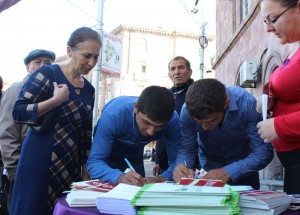

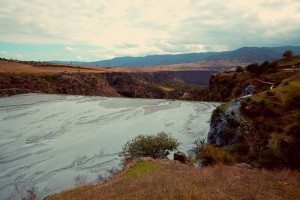
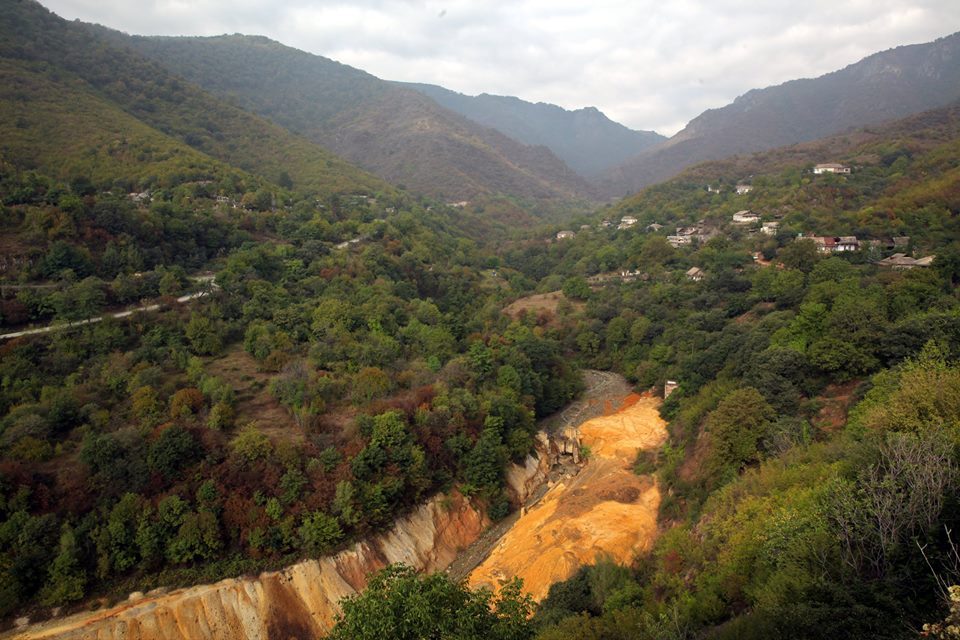

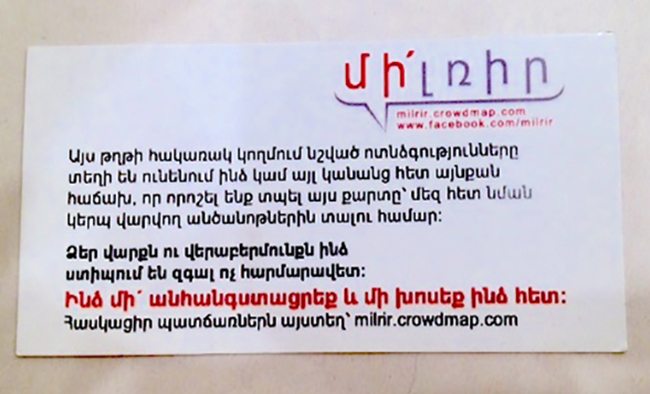
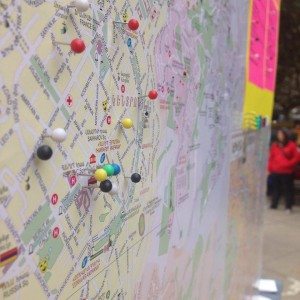
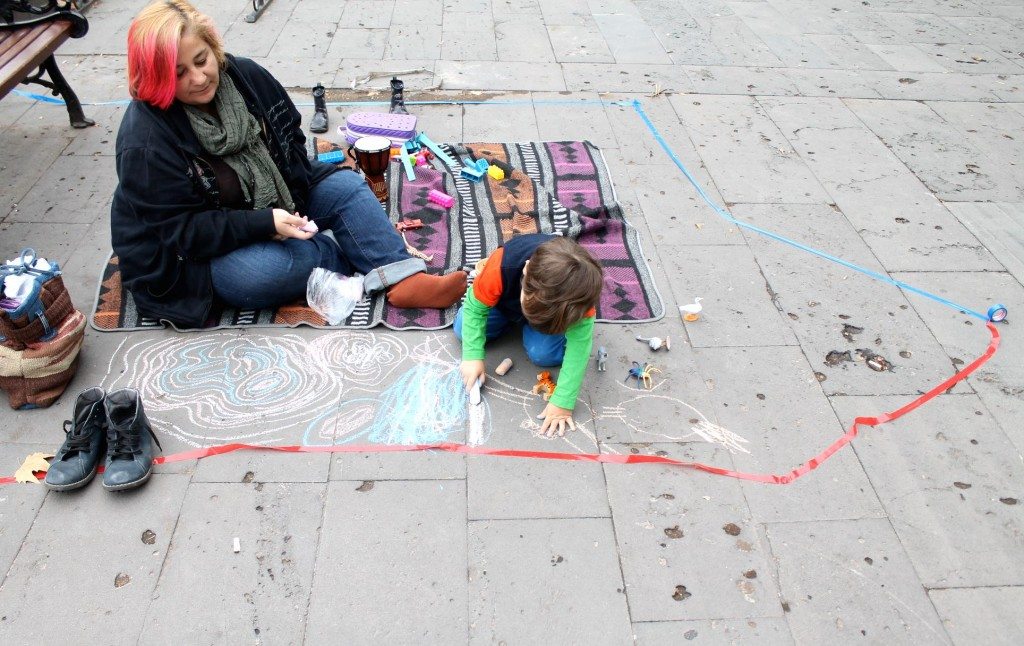
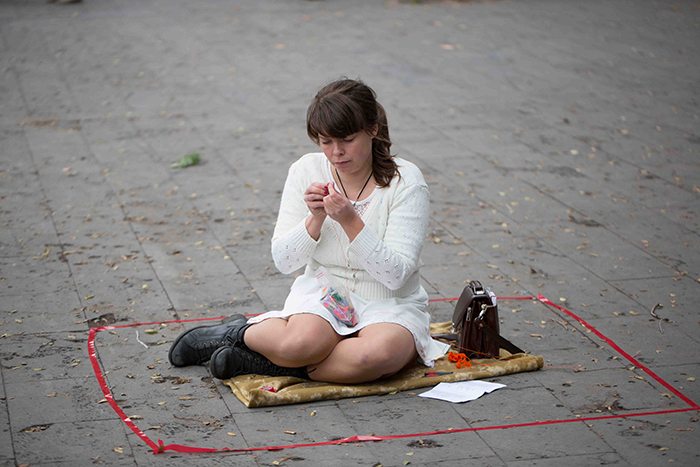
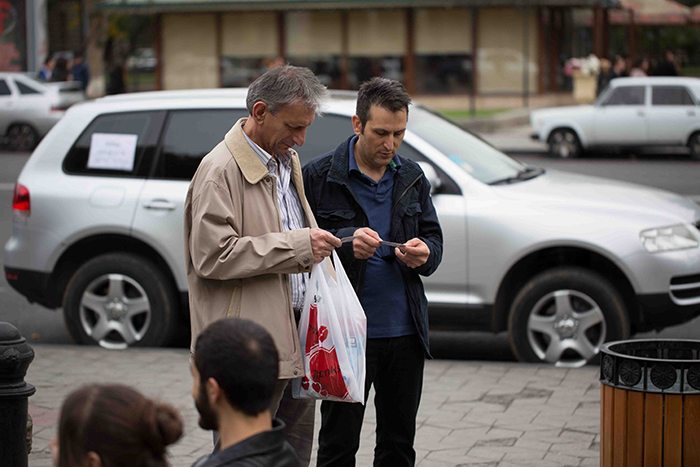
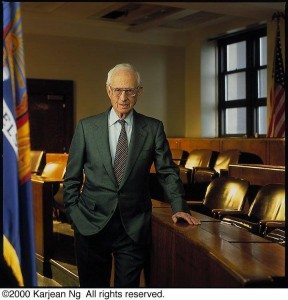
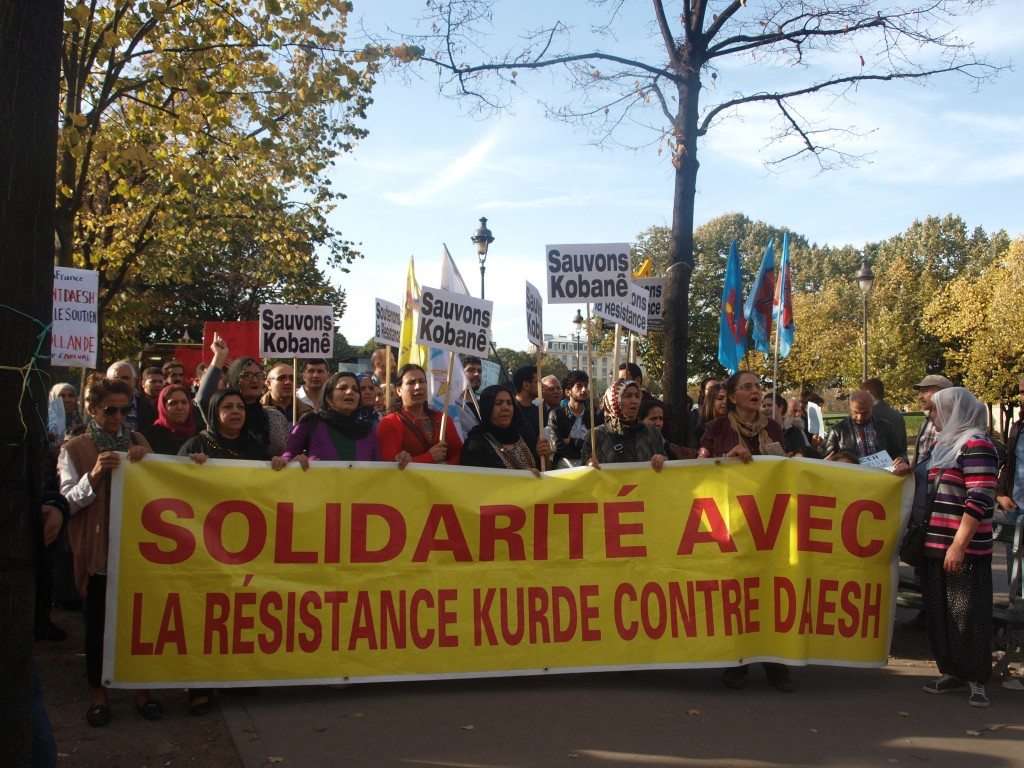
!['I came here today to show you the support of the Armenian community of France. [The Armenian community] feels strongly about the Kurdish struggle, and their right to exist.' (Photo by Fiona Guitard)](http://armenianweekly.com/wp-content/uploads/2014/11/P1012893-e1414854164976-225x300.jpg)
